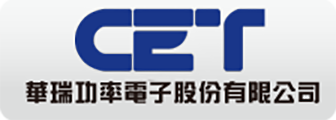China's smartphone market plunges; Apple falls out of the country's top-4 sellers
China's smartphone sales saw a record decline in the first quarter of 2018, according to a new report by independent analyst company Canalys.

According to the report published Thursday, smartphone shipments in China saw a 21 percent decline annually to 91 million units, with eight of the top 10 vendors experiencing a fall in sales.
Apple saw itself displaced once again from its No.4 position by local brand Xiaomi, which was the brand that saw the biggest growth in shipments — by 37 percent to 12 million units sold. (Apple had edged ahead of Xiaomi by a slim margin in the fourth quarter of 2017, according to Canalys.)
Top spot holder Huawei, including its Honor brand, also managed to grow shipments by 2 percent.
The report showed that China's smartphone segment is increasingly being dominated by four domestic players: Huawei, Oppo, Vivo and Xiaomi. The companies accounted for more than 73 percent of total shipments in China for the first quarter.
Vendors outside the top five, meanwhile, saw their market share slide to 19 percent in the recent quarter, the report said, and more consolidation in the space is expected.
"The costs of marketing and channel management in a country as big as China are huge, and only vendors that have reached a certain size can cope," said Mo Jia, an analyst at Canalys.
"While Huawei, Oppo, Vivo and Xiaomi must contend with a shrinking market, they can take comfort from the fact that it will continue to consolidate," he added.
The latest report, however, should not come as a surprise. Earlier this year, analyst Nicole Peng of Canalys spoke to CNBC's "Squawk Box" and said Huawei and Xiaomi are "the bright spots" in China.
That was corroborated in the report by Canalys analyst Hattie He, who said "Xiaomi is the only vendor in the top-5 that is focused on the sub-RMB1,000 (about $160) price segment and it owes close to 90 percent of its shipments to Redmi," in reference to the company's line of budget smartphones.
The report did, however, say a return to growth is expected in the upcoming quarter, with Oppo, Vivo and Huawei expected to launch new flagship devices.
The inventory issues that Oppo and Vivo experienced in the fourth and first quarters "are now behind them," said Jia.
"New smartphones will definitely entice people to upgrade, but vendors are more careful of avoiding oversupply in the channel," he said, adding that the market could see "a short period of stagnancy" as players refocused on research and development efforts instead of marketing products.
在线留言询价
- 一周热料
- 紧缺物料秒杀
| 型号 | 品牌 | 询价 |
|---|---|---|
| TL431ACLPR | Texas Instruments | |
| CDZVT2R20B | ROHM Semiconductor | |
| BD71847AMWV-E2 | ROHM Semiconductor | |
| RB751G-40T2R | ROHM Semiconductor | |
| MC33074DR2G | onsemi |
| 型号 | 品牌 | 抢购 |
|---|---|---|
| BU33JA2MNVX-CTL | ROHM Semiconductor | |
| STM32F429IGT6 | STMicroelectronics | |
| BP3621 | ROHM Semiconductor | |
| TPS63050YFFR | Texas Instruments | |
| IPZ40N04S5L4R8ATMA1 | Infineon Technologies | |
| ESR03EZPJ151 | ROHM Semiconductor |
- 周排行榜
- 月排行榜
AMEYA360公众号二维码
识别二维码,即可关注


请输入下方图片中的验证码:























